
Developing a Camera Community: Praxis Gallery & Photographic Arts Center
Published September 26th, 2023 by Russ White
The five-year-old artist-run nonprofit has settled in Seward and is expanding its audience, its membership, and its facilities
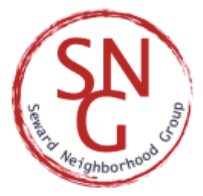
Two centuries ago, in 1826, a French inventor took the first photograph with a camera — a grainy landscape viewed from a window. By some estimates, the picture took several days of exposure to achieve, letting light in through a lens onto a pewter plate coated in bitumen of Judea, a kind of photosensitive tar. It would be glib to say that not much has changed, especially as I sit here with a phone in my pocket that has some 20,000 photos in its library, but in truth, the fundamental elements of photography really have stayed the same: you need a lens, you need light, and you need some place to record that light, whether on a plate, a film, or a hard drive.
And Praxis Gallery and Photographic Arts Center welcomes all of the above. Founded in 2018, the artist-run, member-based nonprofit exists to serve photography in all its forms, from digitally manipulated to utterly analog. You wouldn’t know it from the outside — a squat, one-story complex in the shadow of the Ivy Arts Building — but Praxis is sprawling, home to four separate galleries, a community darkroom, a modular workspace, and a soon-to-open 8x10 project room.
“It’s pretty ambitious, but that’s what we’re here for,” says Program Director Ross Anderson. “We’re just totally focused on photography.”
That is apparent as soon as you get through the front door, which opens into their main gallery space. Lining the walls in identical black frames are photographs from all over the world, each submitted and selected for themed exhibitions that rotate monthly. During my visit, the theme was The Abstract Image, and entries included close-ups of torn billboards, isolated snippets of landscape, microscopic details of chlorophyll, and dozens more. Down a long hallway, in the Directors’ Gallery, another group of photos responded to the prompt Liquid ~ Sky, each one again framed identically in black.
“Jonathan Pavlica is the Gallery Director,” Anderson explains, “and he does the sequencing. In these two galleries there are 109 frames, and he’ll take all of them down and put 109 new images up each month.”
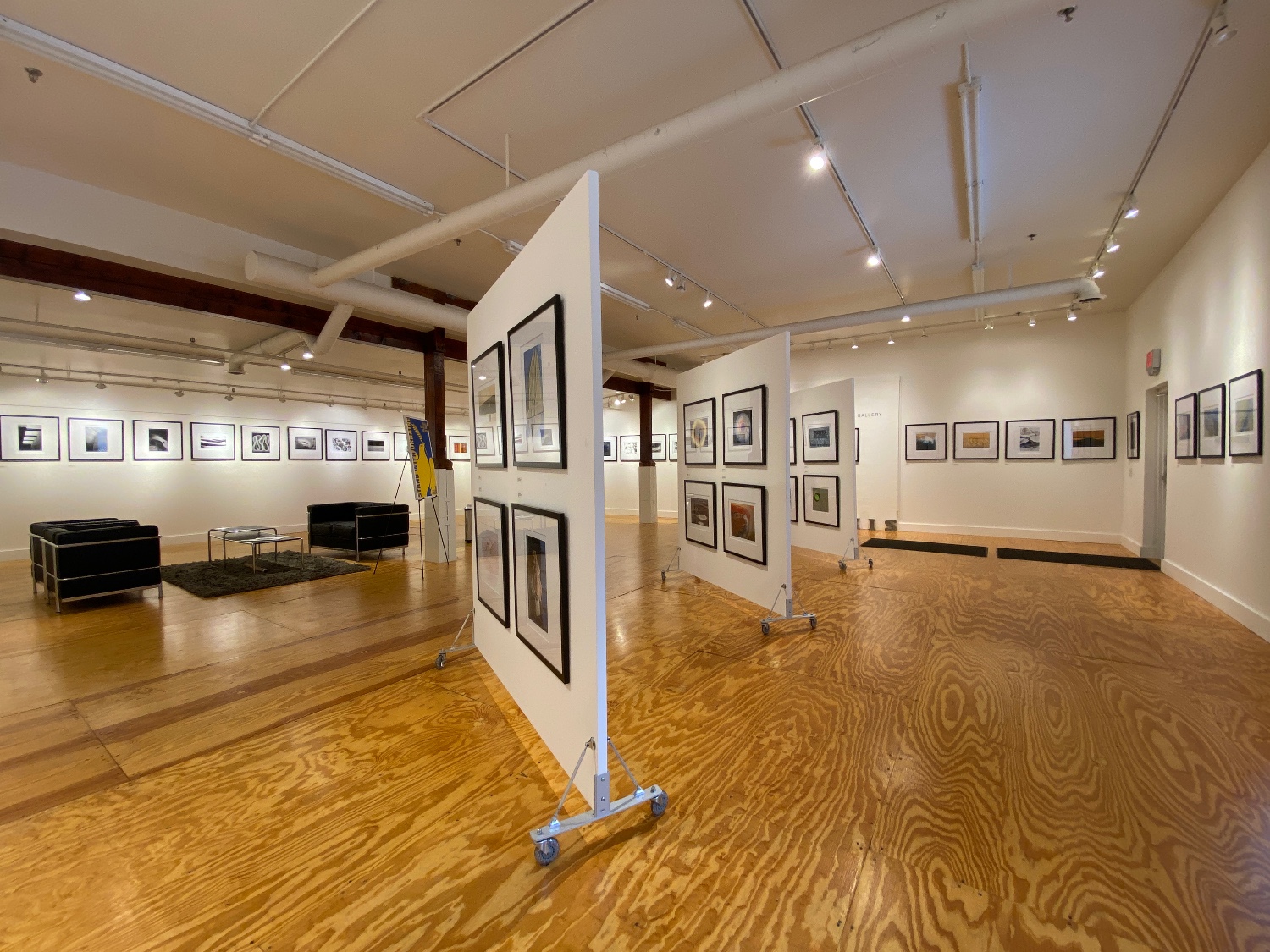
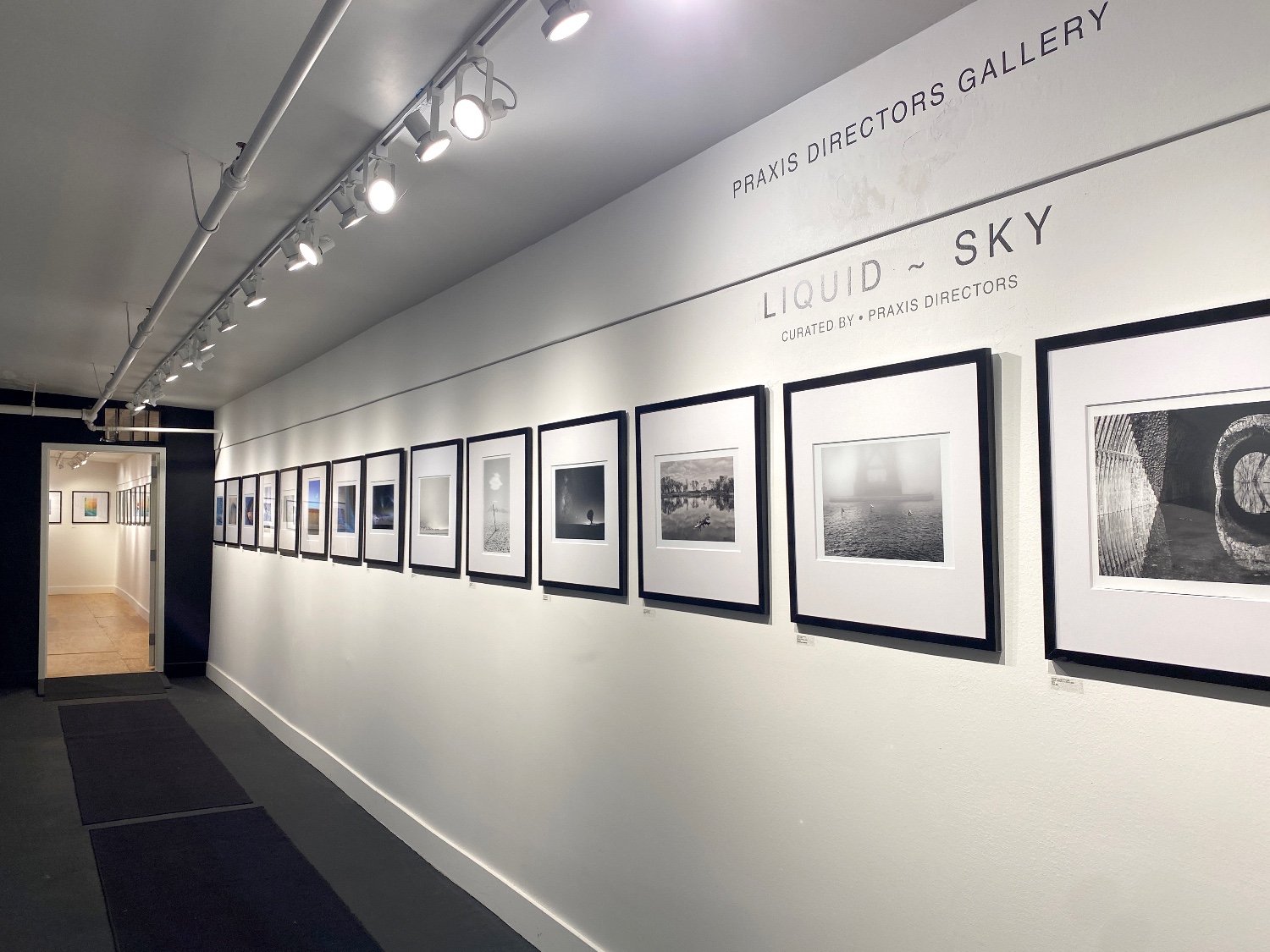 Top: Praxis Gallery. Bottom: Directors' Gallery.
Top: Praxis Gallery. Bottom: Directors' Gallery.
This sort of isocephaly has an equalizing effect, affording novice photographers the same level of sophistication as seasoned professionals and keeping the focus on the photos instead of on the frames. Many of the works on view are original prints that the artists have sent in, but Praxis also offers a print service as part of its open calls, allowing photographers from all over the world to bypass prohibitive shipping costs and other barriers to participate. That means that images from Iran, South Korea, Mexico, Norway, and elsewhere can make it all the way here, to this small but mighty exhibition space in Seward.
Of course, we’re no strangers to images from around the world — those phones in our pockets can take us to all those places as well. But for Anderson, who got his BFA from the University of Minnesota in 1992 with an emphasis in photography, the phone just doesn’t cut it.
“Art and photography belongs on the wall. When people stand in front of a piece of art, that’s where the magic happens, that’s where the tension happens, where they start to develop an idea. When they’re just flipping through it on the phone, there’s nothing invested. Get in your car, ride your bike down here, and come in here and spend time. Even if you walk away and say ‘oh, that was a terrible show,’ I’m like ‘Good, you had an experience.’ That’s a positive impact because any impact at all with photography now is really hard because it’s ubiquitous in its digital form.”
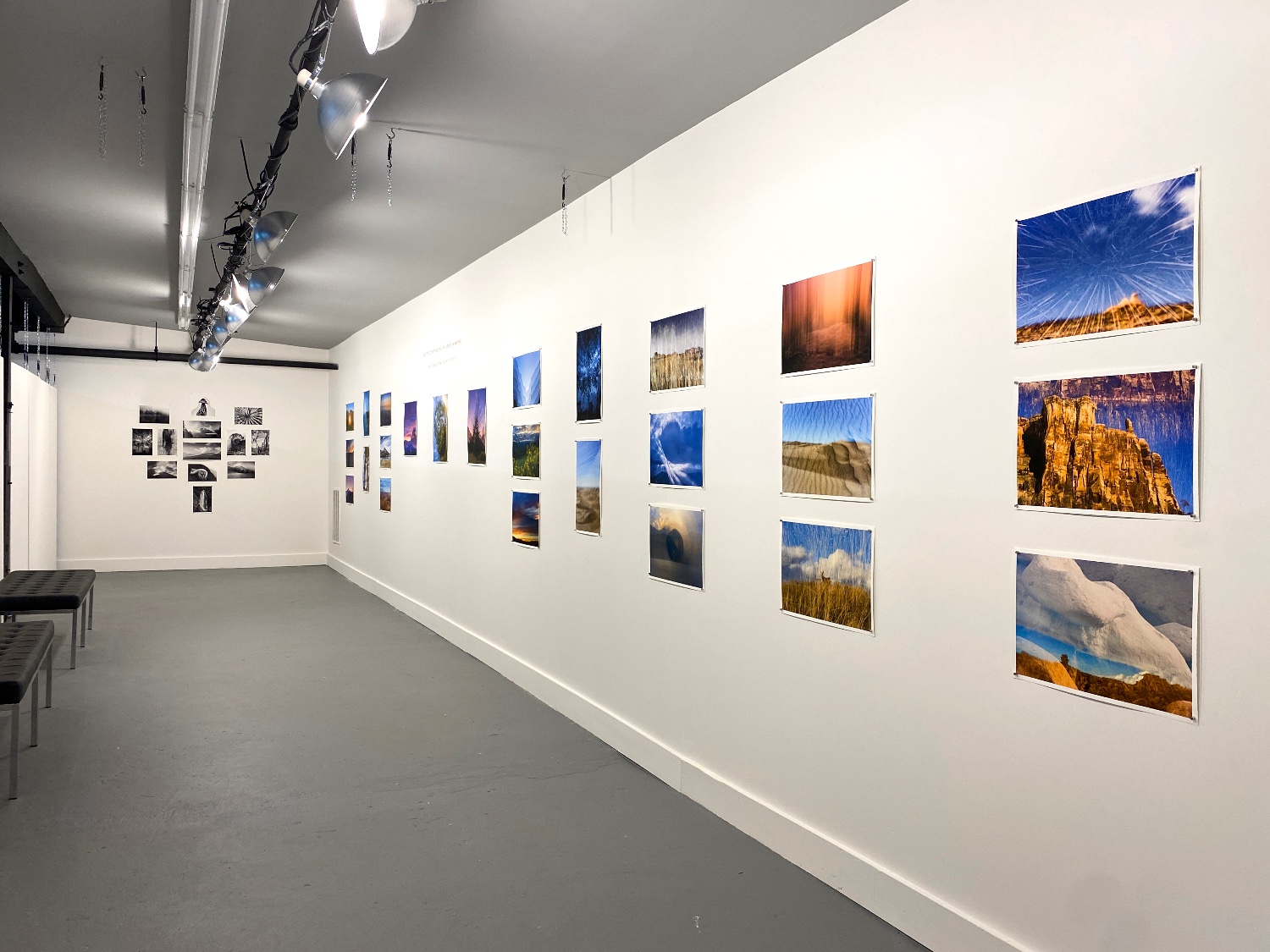
The Project Lab Gallery, which focuses on longer run solo and small group exhibitions of emerging photographers.
Anderson is well versed in the digital side of things, having spent several years as a commercial photographer in Minneapolis and New York. What began as a career spent shooting on sets and collaborating with other creatives evolved into a much more solitary one. “Five years later I was spending one day on set per week, just collecting all the pieces to go back and build a photograph in Photoshop for the other four days a week.” Doing that for years on end, he found himself pigeonholed into something he was good at but did not particularly enjoy. “I became an Adobe Photoshop robot.”
Founding Praxis was a way to return to his roots — to the aspects of photography that involve collaboration, community, and, quite often, chemistry. “Part of our mission is to support the preservation of historic processes,” Anderson says. One new project in the works is turning a utility closet into an 8x10 Project Room, a mini-darkroom with a massive beast of an enlarger from the 1960s specifically for developing photos shot on 8x10” plates. “Our hope is to connect with other organizations, if people want to take 8x10 glass or acetate negatives and make images. We’re creating this darkroom so that when people have a box of glass negs, they don’t just have to shrug their shoulders and leave them at an antique store where probably nobody is going to buy them.”
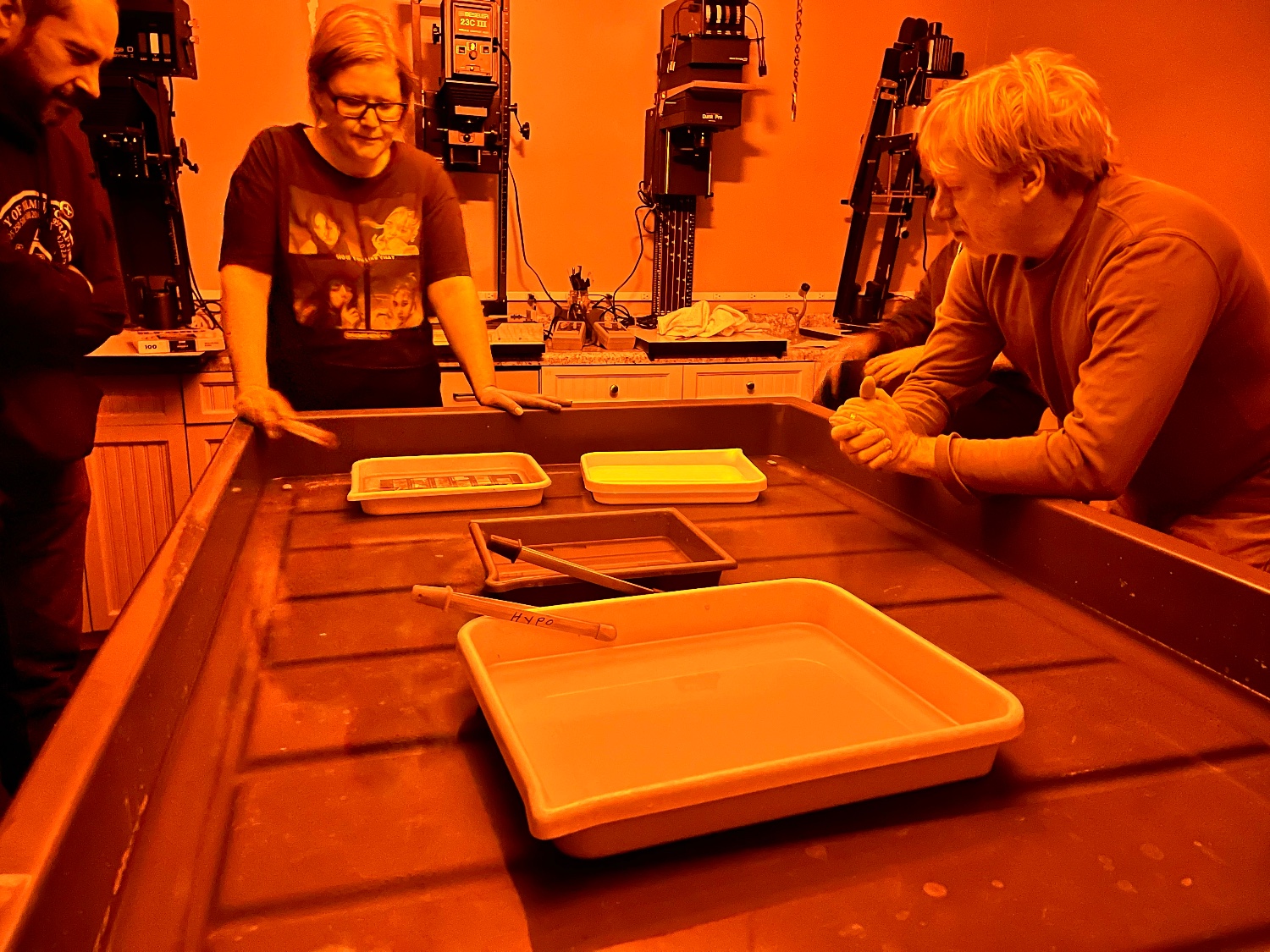 Praxis Access Members using the darkroom.
Praxis Access Members using the darkroom.
Praxis also has a small exhibition space fittingly dubbed the Chemical Gallery, which only shows photos that were produced in a darkroom. They also offer two membership tiers, one of which is the Access Membership, a $35 a month program that grants members full access and free chemicals in Praxis’s darkroom.
“Just bring your photos and your paper,” Anderson says. “And if you want a two-day refresher, it’s $165 for a two-day course where you shoot the neg, develop the neg, dry it, come in the next day, make a contact sheet, and then make a print.” You don’t even need a camera, they’ll let you borrow one. “It’s a public service, a creative community service, and it’s keeping the craft alive. But as it turns out, there’s a much bigger demand than I ever anticipated. It’s the class that fills up every time.”
“Our anecdotal analysis is that 20-somethings are the group with the biggest interest in doing analog work. At first I didn’t think that would be the case. This is the generation who grew up with the digital image; their whole life they’re used to flip flip flip flip,” he says, scrolling on his phone, “and once you flip that photo, it goes into the trashbin of ones and zeroes for them. Watching people work with making a print — it’s something you hold in your hand, it’s an artifact.”
During our visit, two members slide in and out of the darkroom through its revolving door, comparing notes on how best to tweak their images to get the best prints possible. Down the hall in another exhibition space, the Project Lab Gallery is showing the double-exposure work of Nolan Septer. Behind a series of moveable walls, a modular space is available for rent to both members and the larger community for use as a meeting space or a photo studio. Praxis is a place where experimentation and community go hand-in-hand, proving that even the most traditional of mediums can offer endless avenues for exploration. Anderson has stories about members as young as 12 and as old as 80 getting their kicks working in the darkroom. Even newcomers taking a class for the first time can catch the bug. “No experience, no camera necessary,” he says. “You just get to enjoy the magic of watching your analog film print magically appear in the developer.”
It’s not so different, after all, from that window in France so many years ago. A lens, some light, and a little bit of science — and here in Seward, a place to share the results. ◼︎
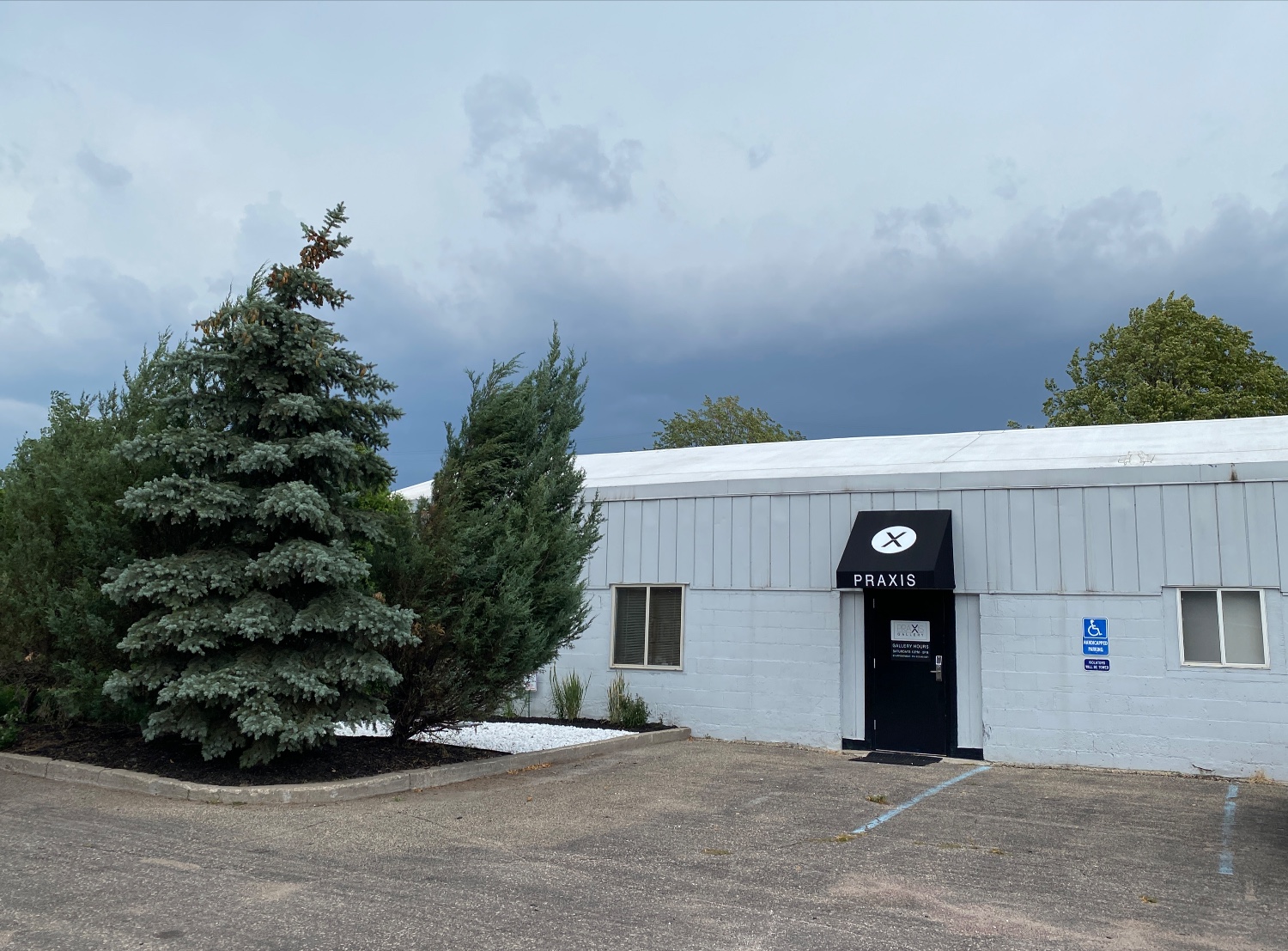
The unassuming entrance to Praxis, caught just as a storm moved in. Photography's fun.
Praxis Gallery & Photographic Arts Center is located in the North West corner of the parking lot on the East corner of 26TH S. E & 27TH Ave S, Minneapolis, adjacent to the Ivy Arts Building. Visit their website or follow them on Instagram @praxis_gallery for regular calls for work, membership and rental information, and current exhibitions.
Praxis is open to the public on Saturdays 12 – 5pm. Currently on view are The Found Object and ORDER ≠ DISORDER, both on view through October 7.
Banner image courtesy of Praxis. All photos by the author unless otherwise noted.
We can't do it without you.
Help keep independent arts journalism alive in the Twin Cities.